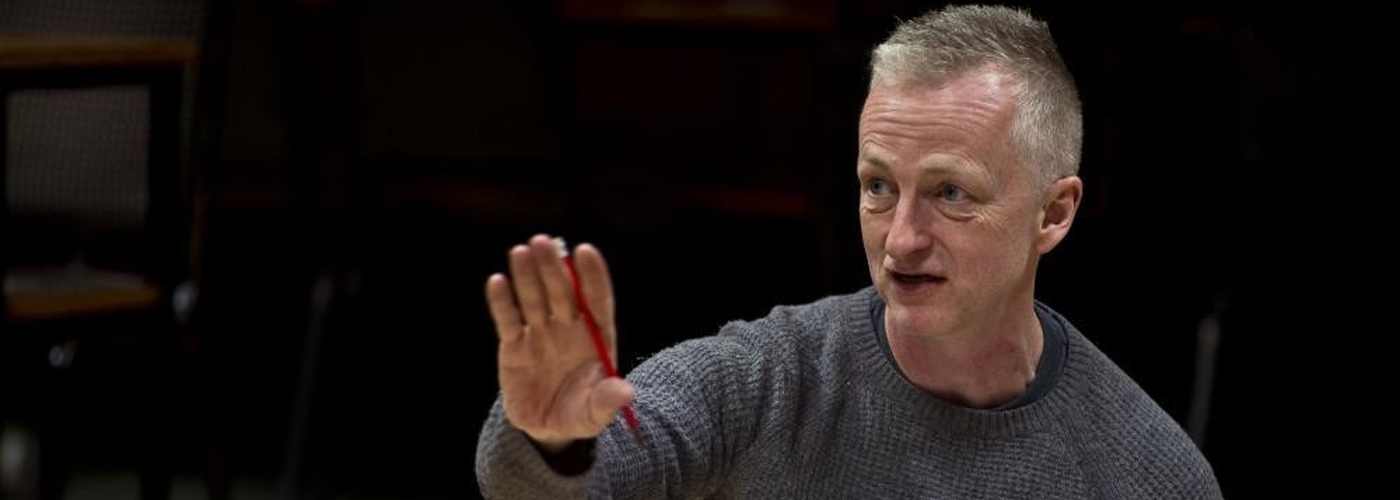As the huge biennial arts festival returns this week, Danny Moran asks: “Are you out of your mind?”
People of Manchester! Gather round, and behold culture’s searchlights playing happily in your grey northern skies. Yes, this week sees the return of your very own international arts festival. The bedrock of your cultural provision. The jewel in the municipal crown. The shop window into which the noses of a global cognoscenti are hopefully, squeakily pressed. Where the Buddha treads the boards of the Opera House. Where Engels is winched to the tables of the chattering class. Where the avant-garde meets the credit card and the culturally woke get to try tomorrow’s fine art feels today. Where you might meet yourself in the mirror of a four-hour Marina Abramović performathon, or forget yourself in a rage at some Cabaret Voltaire-scored clog dancing bullshit. Or - who knows? - enjoy your best chance to see Handel’s Messiah reworked by Giorgio Moroder with live expressionist balloon-twisting from a certified balloon-twisting black-belt.
The fortnight which follows promises a familiar array of seriously sophisticated shit
There can be no doubting the scale of ambition when it comes to this big budget biennial affair. And with enormo-venue The Factory due to activate golden egg production some time in 2021 we may indeed be on the verge of a new chapter in Manchester’s cultural history. So let the culture commence? Two years ago, you may recall, we commenced with a giant runway thrown up across Piccadilly Gardens. “What Is The City But The People?” we were asked by hip London happening-maker Jeremy Deller, as a parade of locals, looking suspiciously like the cast of one Facebook Friends list, rode the applause like post-virgins emerging triumphantly from the Big Brother House.
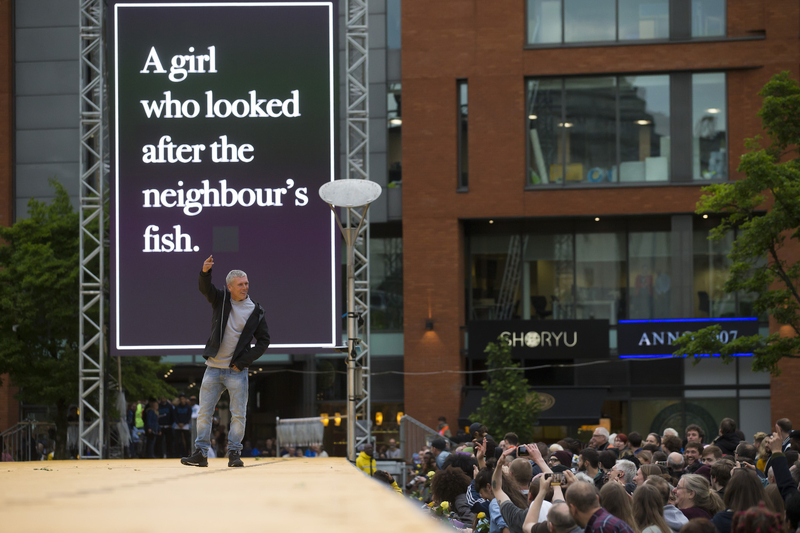
This year discerning eyes will be turned to Cathedral Gardens, Thursday teatime, as Yoko Ono leads a mass bell ringing in the name of peace - you’re warmly invited to turn up and ding along, say organisers. The fortnight which follows promises a familiar array of seriously sophisticated shit: a David Lynch ‘takeover’ at HOME with art, music and film. A huge choral elegy for Peterloo at Bridgewater Hall with words by Manchester poet Michael Symmons Roberts. A digital-projections-and-dance thing called ‘Invisible Cities’ in the mood-space of Mayfield Depot. Plus more bands and beats than you could shake a lanyard at in festival square.
Cornered in his Blackfriars House taste bunker, festival director John McGrath comes out fighting when presented with a volley of man-sized Confidential questions.
There is no shortage of fans of MiF, both within the region and beyond (audience targets for both domestic and tourist ticket sales are always exceeded, he insists, and £40m put in the pocket of the local economy last time out). Lack of engagement from some sectors of the Manchester community is, he freely admits, one of the challenges facing the festival going forward.
Part of a small clique of like-minded ventures across the globe – McGrath cites Paris, Melbourne, Berlin and New York – it heads up a movement seeking to push the envelope in terms of how high culture can be exported to large audiences around the world.
So should we cherish our curiously bonkers bi-yearly bash? And to those who feel a sense of exclusion from MiF: is the answer simply to wish it away or ultimately to find constructive ways to engage with it?
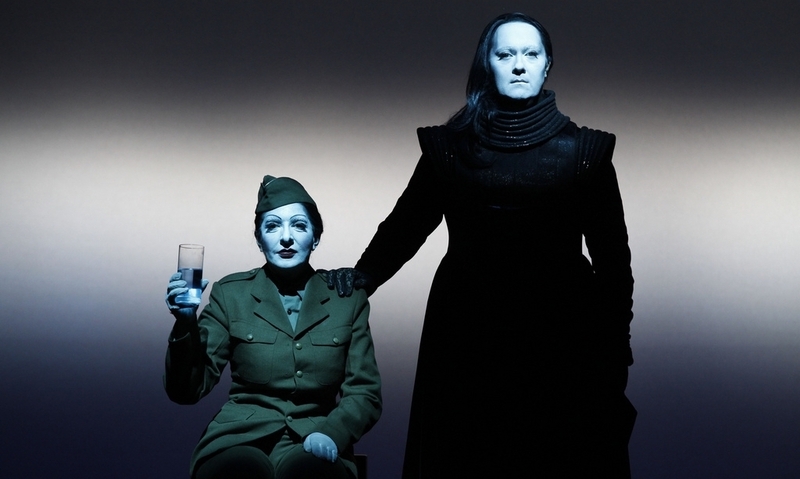
It’s often said that the festival’s great virtue is the commissioning of original work - that that’s what makes it so right for Manchester, as a city renowned for innovation and inspiration. What have been MiF’s biggest successes in terms of works which have had an afterlife beyond the festival calendar?
JM – 'Everyone will have different favourite examples. Mine certainly include Marina Abramovic at the Whitworth Gallery as an extraordinary moment with an artist who, probably before she did that project, actually not that many people in Manchester knew of.'
This is your second festival. How have you sought to establish a different emphasis from your predecessor, Alex Poots?
JM – ‘Possibly by not matchmaking quite so much. So you’ll probably see in this programme there are more single artists. And then I’ve been thinking about the festival’s use of public space - we made a lovely start with that in 2017 with What Is The City But The People? and this year we’ve commissioned Yoko Ono to do Bells For Peace.'
What’s Yoko Ono’s track record in delivering peace?
JM – ‘I think peace for Yoko Ono is not a naïve political position. It’s an artistic process that she’s always engaged in. The question is how can we make peace? What can we do together that might make it more likely to live in peace with each other, and what would that look like? Bells For Peace is about an action, a ringing, a making. She’s interested in how do we make peace rather than war, like they used to say back in the sixties.’
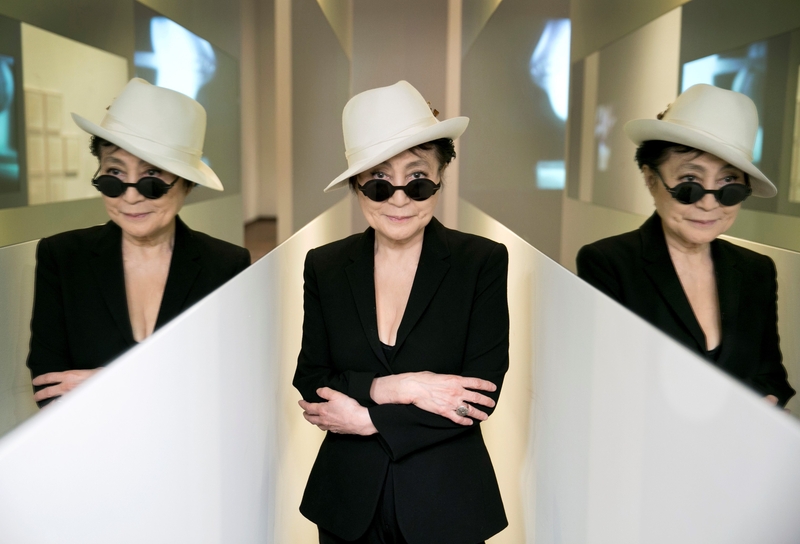
Speaking to Confidentials some time ago, your creative director Mark Ball reminded him that this is an international festival. Some people might infer that it isn’t for Mancunians…
JM – ‘I think that we do an awful lot of work year-round with an awful lot of Mancunians. It’s been something that I’ve been particularly interested in - how do we create a sense of community round the festival? So we have a network of about three thousand people now, all people who’ve signed up to being part of the year-round journey.
'Obviously we’ve got flagship projects like Festival In My House, where people curate their own festivals all over the city. Going forward, I’m interested in commissioning Manchester artists. We did a great project with Contact this year, where five young commisioners from Contact chose the Chim-Pom piece…’
…this is at Angel Meadow, right? In recognition of the diet of beer that many people lived on at the time of the great cholera epidemic of 1832 you’re creating a secret underground brewery beneath Victoria Station, where thousands of Mancunians were laid to rest in unmarked graves, which will form the backdrop for the work of five emerging artists. If I’ve understood correctly?
JM – ‘Well no, the five emergent people are young curators. The offer to Contact Theatre was to form a group of young creators who would help choose artists for one of the projects in the...'
Are you out of your mind?
JM – ‘Well they identified Chim-Pom, who are an anarchist visual arts collective. They make work mainly in Tokyo, which is wacky and funny but also quite challenging in terms of ideas. Virtually all the tickets have sold out for it this point, and I don’t think that’s just because it’s free beer.’

Manchester is of course very proud of its heritage, and those areas of culture in which it has excelled, such as popular music, television, performance poetry, the Manchester School in painting, the Hallé orchestra…they’ve always been seen as democratic, with an appeal to the man in the street. Some might say that MiF trades on Manchester’s renown, usurping its cultural infrastructure, but can be seen, plain and simple, as elitism. They feel that what you’re doing is something they simply have no stake in, including some local artists.
JM – ‘I think that’s a misperception of both sides of the picture. So I think when you think about the days of Joy Division, New Order and the Hacienda…that wasn’t actually the average man on the street. That was a bunch of kids who thought they were different and were thinking about artistic movements and were wide-ranging in their points of reference. It wasn’t a piece of localism.
‘Likewise when you look at the history of the Hallé, or Central Library…the idea that a working class city should have one of the finest orchestras in the world and that it should have a great library…and people should have access to the great literature from around the world…that to me is the heart of Manchester culture. Not provincialism.
‘When I worked in New York, nobody ever said “why are all these people coming here from elsewhere…why isn’t New York for New Yorkers?”’
It had a sense of humour about itself. So I think that if it’s good…people get it
Would it be accurate to suggest that the festival is seeking to pioneer a kind of hybrid/multi-disciplinary art that we could fairly describe as ‘spectacle’?
JM – ‘I think that when we talk about The Factory we talk about it as where the art of the future will be made. But I definitely don’t think that that means that the work is always pursuing spectacle.
‘Nonetheless, it can be great to create events that are exciting, either because they’re visually awe-inspiring or because they’re an extraordinary way of people coming together, to feel like they’ve been at a very special moment. There will be projects in this festival - I think Invisible Cities will be one – that will have that sense of “Oh my goodness! I can’t quite believe what I just saw!”’

Could you explain what Invisible Cities will be so that we can visualise it?
JM – ‘Yes. So you’ll be sitting in a big in-the-round space. There’ll be a number of surfaces on which digital projection will happen. Combined with that there’ll be a combination of actors and the dancers of Rambert Dance. And you’ll hear the story that lies at the heart of Italo Calvino’s book, of the explorer Marco Polo and the journeys that he went around the empire of Kubla Khan. And those cities, in very unusual ways, will come to life.’
Mancunians will hate that, surely?
JM – ‘No! I mean, that was the thing when you said what did I learn? I really thought if there’s one show I’m going to get crucified for in this festival [in 2017] it was Ten Thousand Gestures by Boris Charmatz. Twenty dancers on a bare stage. The idea was that none of the movements in the entire piece would be repeated, so if someone lifted up their arms like that nobody else could lift up their arms like that, and that was it for an hour and a half. There were some who didn’t like it, but the vast majority really, really did, and they liked it because it was different. Because the skill of the dancers was fantastic. It had a sense of humour. So I think if it’s good…people get it.’
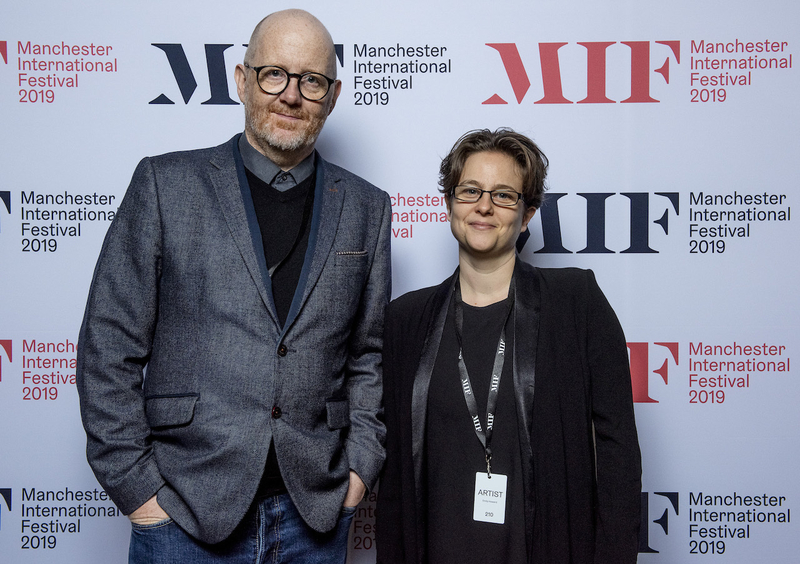
Wouldn’t one of the best ways of making a bridge to the audience you’re seeking to attract be the establishment of a proper fringe?
JM – ‘We’d be entirely supportive of a fringe, but I don’t think you can stage a fringe from the centre. And I think maybe there’s a couple of reasons why it hasn’t happened. One is that Edinburgh is so dominant, and it’s pretty close, both in time and in geography. It may be that the model of the fringe as we have it needs to be reinvented.’
‘One of the reasons to find different ways to engage with up and coming artists in the city is to be supportive of that and say "what would you do?" It doesn’t always need to feel comfortable for us. It can be challenging.’
You can follow our coverage of Manchester International Festival on our festivals page. Click here for our guide to the best things to eat and drink at the festival.
Follow @dannyxmoran on Twitter


